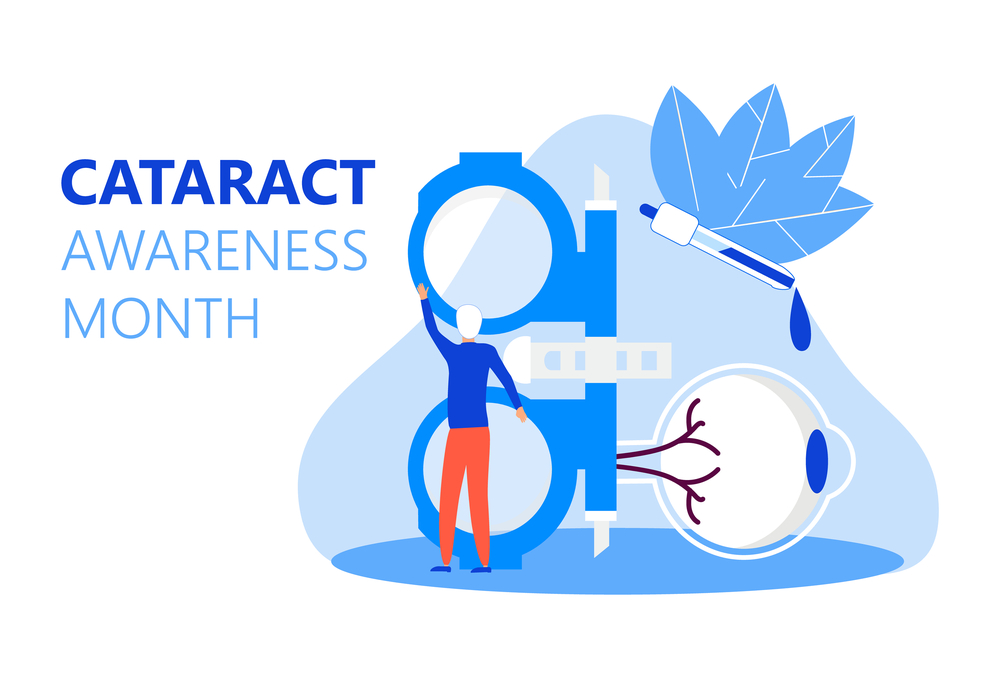June is “Fireworks Eye Safety & Cataract Awareness Month”. In this article we are going to address cataract awareness. As you may already know, a cataract is a clouding of the eye’s lens that affects vision.
Cataracts are the leading cause of blindness in aging adults and incidence increases in each decade of life beginning around age 40. Cataracts affect nearly 25.7 million Americans over age 40 and is projected to increase to 45.6 million by 2050. Factors that increase your risk of developing cataracts include obesity, smoking, high blood pressure, diabetes, a family history of cataracts, radiation, previous eye surgery, extensive exposure to sunlight, previous injury or inflammation in the eye, long-term use of steroid medication, and aging.
There are two ways cataracts affect your vision:
- Clumps of protein reduce the sharpness of the image that reaches the retina, making that image cloudy or blurry depending on the severity of the clouding or clumping.
- A gradual changing of the clear lens to a yellowish/brownish color, adding a brownish tint to vision. As your clear lens slowly changes color with age, your vision may gradually acquire a brownish shade. The amount of tinting may be small and may not cause vision problems at first. However, increased tinting, over time, may make it more difficult to read and perform daily activities. With advanced lens discoloration, you may experience difficulty identifying shades of blue and purple.
Symptoms of Cataracts:
- Blurry or cloudy vision
- Poor night vision
- Prescription changes that occur frequently
- Colors may seem faded
- Halo’s or glare around lights. Sunlight, lamps, or headlights may appear too bright.
- Multiple images in one eye similar to double vision
Cataract Detection
Cataracts are detected when performing a comprehensive eye exam including a visual acuity test, dilated eye exam, and tonometry.
Cataract Treatment
Cataracts are not reversible, nor will they go away with medication or eye drops. The only way to remove a cataract is by surgically removing the clouded lens.
The necessity and time to have cataract surgery depends on the individual and severity of the cataract(s) and how it’s affecting your vision. Some things you may want to consider to help you determine whether or not you’re ready for cataract surgery or whether surgery is necessary:
- Are your cataracts affecting your ability to participate in the outdoor activities you enjoy?
- Do your cataracts impact your daily or occupational activities?
- Are your cataracts affecting your night vision when driving?
If you’ve answered yes to any of these questions, you will definitely want to speak with your ophthalmologist or eye care provider to determine whether it’s time to consider cataract surgery or whether you may be able to manage your cataracts in other ways. At Fort Lauderdale Eye Institute, we have a team of dedicated cataract surgeons that have successfully performed cataract surgery on thousands of patients. We also offer laser assisted cataract surgery, which takes minutes to perform and is painless. Call us to set up an appointment today (954) 741-5555.







